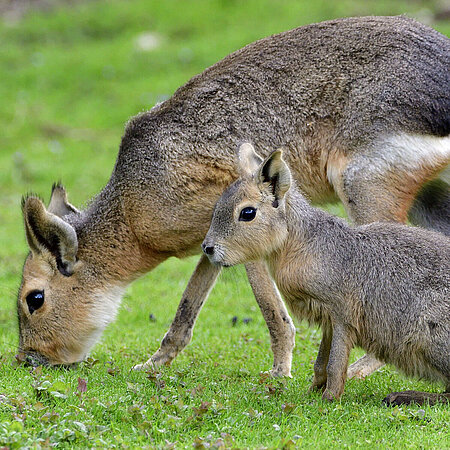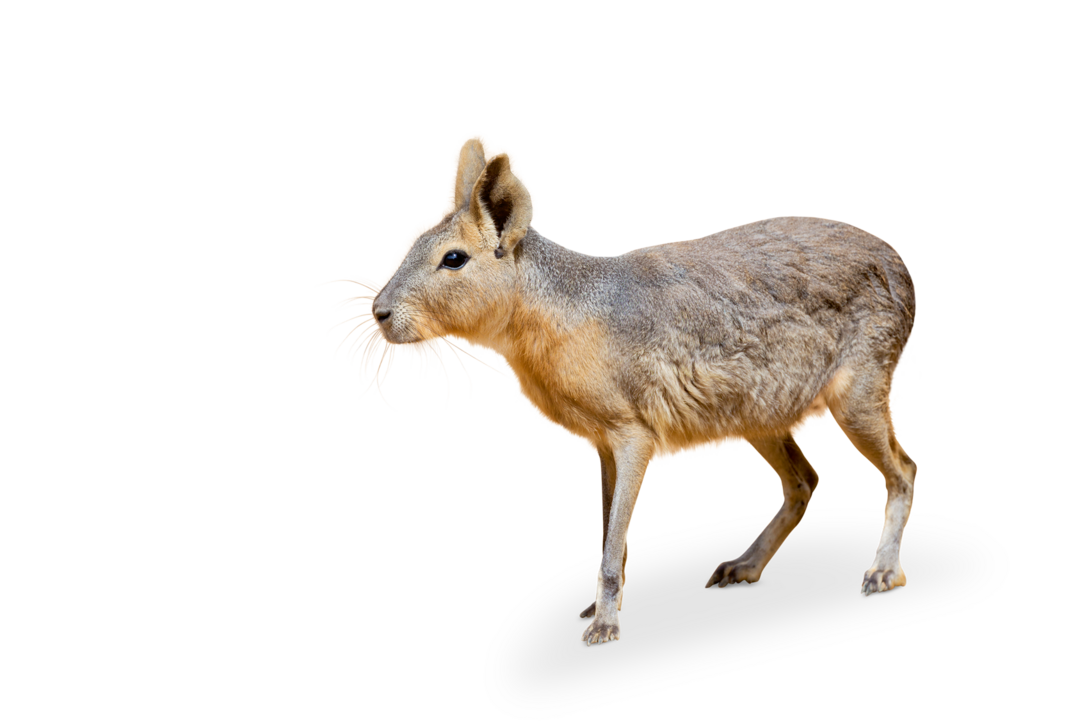Patagonian Mara
Dolichotis patagonum

- FamilyGuinea pigs (Caviidae)
- Weight7 – 8 kg
- HabitatDeserts, savannahs, grasslands, scrublands
The real Speedy Gonzales
The Patagonian mara has eyes on the side of its head that gives it an almost 360° view. This enables it to keep a lookout for predators such as pumas, Andean jackals and raptors. When fleeing its foe, it can reach an amazing top speed of 70 km/h. Within the group, one of the adults performs sentry duties and gives a signal to the others to hide when danger is sensed.

Under time pressure
Male Patagonian maras have plenty to achieve in a short space of time: the females are only sexually receptive for 30 minutes every 3 – 4 months. In order not to miss this brief time window, they live in monogamous pairs for life. When the pups are born, several pairs bring their young together to form a large communal crèche. The females feed the pups, while the males protect the group.
Every day the Patagonian mara roams large areas in search of its favourite food: the tips of young grass blades.
Distribution
